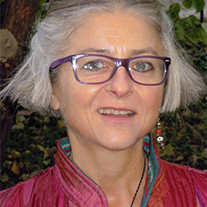New publication in Nature Scientific Reports on FAP-induced high income increase and the potential of FAP for transformative change of agriculture
Published on: September 16, 2021, Submitted by Laura Becker on: September 1, 2021
Within FAP, both the farmer and biodiversity benefit from the land employed for habitat enhancement through the use of marketable habitat enhancement plants (MHEP). The article demonstrates the advantages of this land-sharing approach in comparison to State-of-the-Art land sparing for biodiversity protection through reward-based wildflower strips. On average FAP increased net income per surface by 121% and reduced pest abundance by 65%. The trials include seven main crops - zucchini, pumpkin, melon, eggplant, tomato, faba bean and okra – and four typical Moroccan agro-ecosystems: region with adequate rainfall near Kenitra, semi-arid region around Settat, mountainous region near Sefrou and oasis in Errachidia. Furthermore, the article presents a simulation with conservative assumptions on the potential of FAP to enhance food security by higher production per surface and thus reduce the need to use more and more semi-natural land for agriculture to meet the growing the demands. Conventional agriculture with monocultures and pesticides endangers crop pollinators in agricultural land and the current trend in land-use change threatens pollinators depending entirely on semi-natural land. The article is authored by Stefanie Christmann, Youssef Bencharki, Soukaina Anougmar, Pierre Rasmont, Moulay Chrif Smaili, Athanasios Tsivelikas and Aw-Hassan.
Simulation of potential impacts of Farming-Alternative Pollinators on saving land for nature through smallholders based on 6 vegetables and Moroccan production data 2016-2017. (Photo credit: Nature Scientific Reports)
A new article describes that FAP fields attracted much higher diversity and abundance of pollinators and natural enemies than control fields. The total average net income increase FAP versus control for pumpkin was 152%, for melon 61%, zucchini 111%, okra 79%, faba bean 112%, eggplant 214% and tomato 83%. The income increase was significant in all cases. In the semi-arid region, FAP rose income per surface by 185%, in the mountainous region by 130%, in oasis by 88% and in the region with adequate rainfall by 80%, which shows that the FAP impact is higher in less diverse agro-ecosystems, but the incentive of higher income is reliable in the four agro-ecosystems. In 29 out of 31 trials the income from the 75% zone of FAP fields was higher than from 100% of the control fields, this is important, as already the pilot study from Uzbekistan demonstrated that farmers value mainly the income from the main crop, whereas they regard the additional income from marketable habitat enhancement plants as additional income. The buffering effect against income loss in case a pest, disease or weather incident affect the main crop, which was reported also from both pilot studies (Uzbekistan and Morocco) has been again confirmed. This aspect can become more important and valuable for farmers in the course of climate change related uncertainties. The simulation using different adoption rates and different rates for effectivity (as farmers might adapt FAP to their specific crop preferences) shows that FAP has high potential to reduce the footprint of agriculture (land use and use of pesticides) and reduce the need of land-use changes.
The slightly mosaic planting (four to eight MHEP bordering the main crop in the 25% zone of FAP fields) provided nectar and pollen for wild flower visitors over a longer period (on average 93 days in FAP fields; 63 days in control fields) and attracted also natural enemies over an extended period. This is important for pollinator protection, but also for farmers in two aspects: higher abundance and diversity of pollinators enhances the yield and higher abundance and diversity of natural enemies over a prolonged period contributes highly to pest control.
Not only in low and middle-income countries, where payments for seeding wildflower strips are hardly affordable, but also in high-income countries these two aspects, higher income already in the first year and reduced pest abundance, can motivate farmers to use FAP instead of wildflower strips and to change their behaviour. The incentive is not service related as in wildflower strips but coupled with productivity and performance: FAP rewards farmers for months of environmentally friendly performance. This is important for pollinator conservation and transformative change. Eager to gain higher income per surface, farmers can gain motivation to observe and guard insects in their fields attentively. Recent research highlights the need for incentives and ”behavioural drivers“ for transformative change. The absence of opportunity costs (through land sharing instead of land sparing) and the non-necessity of a seed market for wild flowering plants can additionally support change of behavior and adoption.
FAP was developed to serve pollinator protection, food security and climate change resilience. Particularly, the target higher national food security can be more attractive for strong national protagonists such as Ministry for Agriculture and agricultural extension services than a pure environmental target like pollinator protection. Thus, FAP has higher potential to promote transformative change in agricultural land (Aichi target 7) than approaches focusing on biological targets only.
By now, pollinator decline is tackled as an environmental problem through WFS, hedgerows and fallow land, however the notion “environmental problem” reflects a “fundamental misconception” as most disturbances of ecosystems stem from maladaptive human behaviour. In the Anthropocene, people have the strongest impact on our planet, therefore the Anthropocene requires pollinator protection through skilled and intrinsically motivated humans: pollinator protection not as paid environmental add-on, but as an outcome of skilled ecological society. The clue to this change of paradigm and to transformative change in agriculture might be the shift from land-sparing to respectful land-sharing.



